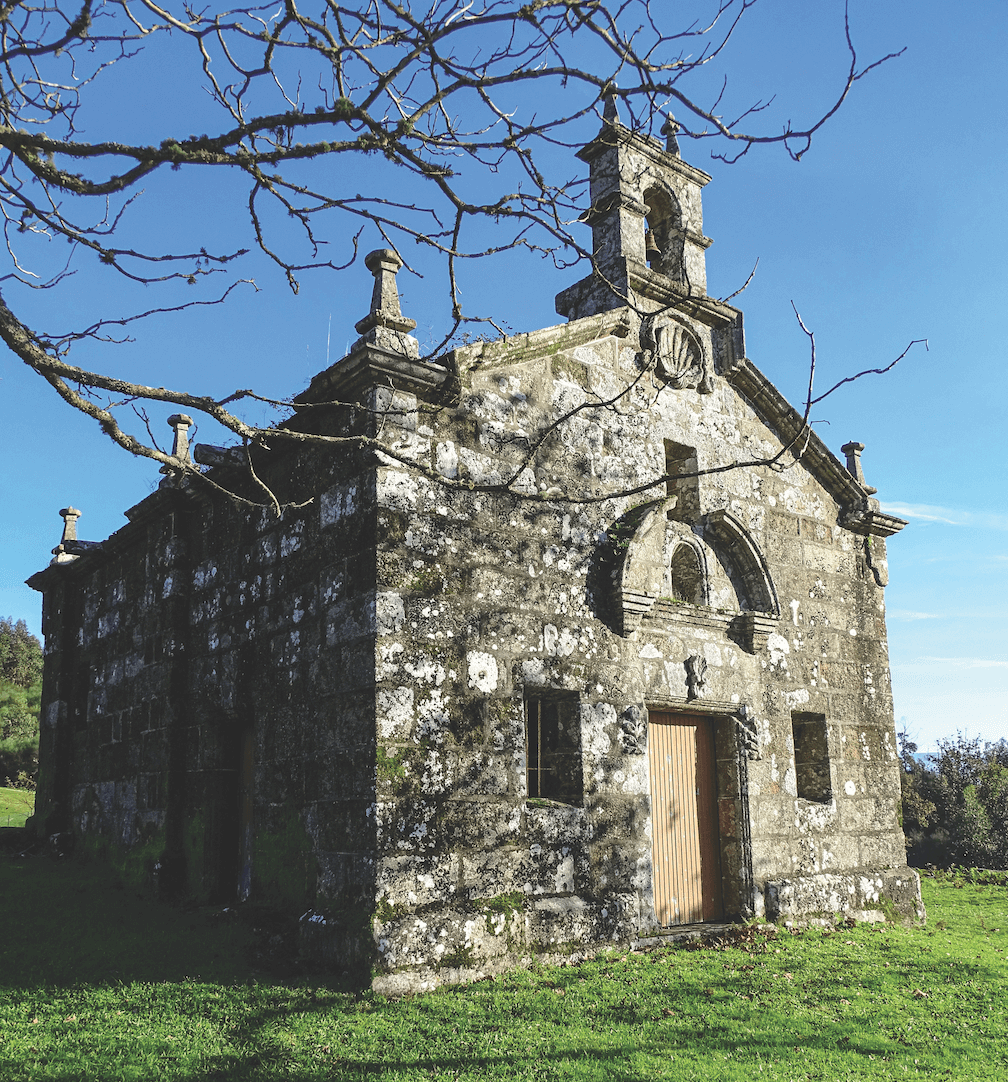St Bartholomew's Chapel

It is located on a hill in the vicinity of the Altamira hillfort. Saint Bartholomew, who was one of the twelve apostles of Jesus, celebrates his feast day on the 24th of August. On that day the whole parish goes up to the chapel carrying with them "all kinds of animals, which would be auctioned at the end, for the benefit of the feast. And they named Saint Bartholomew the saint who takes away fear, for having the devil imprisoned with chains at his feet (...) Even today, on 24 August, the feast of Saint Bartholomew, "croques" are received from the saint to lose fear, and the parish continues to bring him all kinds of animals", Míguez Álvarez points out.
On 29 November 1730, a chaplaincy of the same name was founded. It was created by D. Bartolomé Fuertes Ucha, heir of D. Félix Fortes Ucha, abbot of the parishes of Cela and Zamáns. D. Bartolomé, the founder, was a graduate and priest of the parish of Corzáns. This religious man was one of the chaplains and continuator of different pious works promoted in Corzáns by D. Bartolomé Barbeyto y Padrón, general inquisitor of Galicia between 1677 and 1688.
D. Bartolomé Fortes erected this beautiful baroque chapel, which has a stone vault and good stonework, under the invocation of the saint a-er whom it was named. The chapel is attached to the chaplaincy that he founded and which he endowed with multiple assets, almost all of them in the parish of Taboexa.
In the pastoral visit of 1780, he ordered the purchase of a chalice spoon, a crucifix, the roof to be repaired with lime and a wooden platform to be installed on the floor.
In 1817, its patron, the presbyter D. Félix Rodríguez Fortes, was its steward, and he repaired the door of the chapel. In the documenta*on relating to the works carried out in 1854, it is stated that "it is 6 metres long and five metres wide". It is also noted that the chapel is a blood patronage chapel, i.e. it is a family foundation or work of a religious nature. The patronage financed the celebration of two sung masses, one on the day of its patron saint, Saint Bartholomew, and another on the day of Saint Ferdinand, as well as twelve monthly masses and another one on the day of the Virgin of Carme. It is indicated that the patronage has enough for the celebration of the Sacrifice of the Mass and enough goods to cover its expenses and support the temple.


